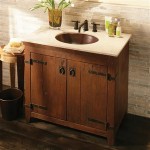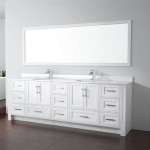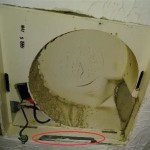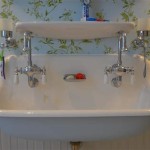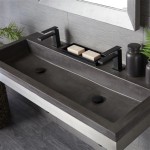Bathroom Sink Pipe Cover: Aesthetics, Functionality, and Installation
A bathroom sink pipe cover serves as a crucial element in maintaining both the aesthetic appeal and the functional integrity of a bathroom space. Often overlooked, the exposed pipes beneath a sink can detract from an otherwise well-designed bathroom. A pipe cover, also referred to as a sink drain cover, lavatory pipe shroud, or a basin pedestal, provides a concealing solution, transforming a potentially unsightly area into a visually pleasing one. This article explores the various types, benefits, and installation considerations associated with bathroom sink pipe covers.
The primary function of a sink pipe cover is to conceal the drain pipes, supply lines, and shut-off valves located beneath the sink. These components, essential for the sink’s operation, are often unattractive and can disrupt the overall design of the bathroom. A well-chosen pipe cover effectively hides these elements, creating a cleaner, more polished look. Furthermore, some covers provide a degree of protection against accidental bumps or contact with the pipes, which can be particularly beneficial in households with children or individuals with mobility issues.
Types of Bathroom Sink Pipe Covers
Bathroom sink pipe covers are available in a variety of styles, materials, and configurations to suit different sink designs and bathroom aesthetics. Understanding the different types is essential for selecting the most appropriate cover for a specific application.
1. Pedestal Sinks: Pedestal sinks inherently incorporate a built-in pipe cover. The pedestal base, usually made of ceramic or porcelain, extends from the sink basin to the floor, concealing the pipes within its structure. This is the classic and perhaps most common integrated pipe covering solution. Pedestal sinks offer a clean, seamless look and are easy to clean. However, they typically do not provide storage space beneath the sink.
2. Shrouds: Shrouds are decorative covers that attach directly to the underside of the sink basin and extend downwards to partially or fully conceal the pipes. They are typically made of metal, ceramic, or plastic and come in various shapes and finishes. Shrouds offer a more customizable and versatile alternative to pedestal sinks, as they can be used with various sink basin types, including wall-mounted sinks. They often feature adjustable heights or telescopic designs to accommodate different plumbing configurations.
3. Decorative Plumbing Kits: While not strictly pipe covers, decorative plumbing kits provide an alternative approach to concealing unattractive pipes. These kits include replacement pipes, shut-off valves, and drain components made of aesthetically pleasing materials like polished chrome, brushed nickel, or oil-rubbed bronze. These replacement parts are designed to be visually appealing, eliminating the need to hide them completely. This option is suitable for those who prefer a modern or minimalist aesthetic and are comfortable with replacing existing plumbing components.
4. Sink Skirts: Sink skirts, typically made from fabric, offer a softer and more traditional approach to pipe concealment. These skirts attach to the underside of the sink, draping down to the floor and concealing the pipes behind the fabric. Sink skirts are often chosen for their decorative value, allowing for customization with various fabrics, patterns, and colors. They can also provide a small amount of concealed storage space behind the skirt. However, they may require more frequent cleaning and maintenance compared to other types of pipe covers.
5. Base Cabinets and Vanities: Bathroom vanities and base cabinets inherently conceal the plumbing beneath the sink. These units provide ample storage space and offer a complete enclosure for the pipes, shut-off valves, and drain components. Vanities are available in a wide range of styles, sizes, and materials, offering significant design flexibility. While more expensive than other options, they contribute substantially to bathroom organization and aesthetics. They are often the preferred choice in new construction or bathroom renovations where maximizing storage is a priority.
Benefits of Using a Bathroom Sink Pipe Cover
The advantages of using a bathroom sink pipe cover extend beyond mere aesthetics. While visual improvement is a primary benefit, several other functional and practical considerations contribute to the overall value of installing a pipe cover.
1. Enhanced Aesthetics: As previously mentioned, the most evident benefit is the improved visual appeal of the bathroom. By concealing unsightly pipes, a pipe cover creates a cleaner, more organized, and aesthetically pleasing environment. This is particularly important in guest bathrooms or powder rooms where first impressions matter. A simple pipe cover can significantly elevate the overall look of the space, making it feel more refined and well-maintained.
2. Protection and Safety: Bathroom pipes, particularly those carrying hot water, can pose a potential safety hazard. A pipe cover provides a barrier against accidental contact with hot pipes, reducing the risk of burns. This is especially important in households with children or elderly individuals. Furthermore, the cover can protect the pipes from accidental damage, such as being bumped or knocked, which could lead to leaks or other plumbing problems.
3. Easier Cleaning: Exposed pipes can be difficult to clean around, often accumulating dust, dirt, and soap scum. A pipe cover simplifies the cleaning process by creating a smooth, easily accessible surface. This helps to maintain a hygienic environment and reduces the time and effort required for bathroom cleaning.
4. Increased Property Value: While seemingly a small detail, the overall aesthetic appeal of a bathroom can significantly impact the perceived value of a property. A well-designed bathroom with concealed pipes contributes to a sense of quality and attention to detail, potentially increasing the property's market value. This is particularly relevant for homeowners planning to sell their property in the future.
5. Improved Organization (with integrated storage): Certain types of pipe covers, such as vanities and sink cabinets, offer the added benefit of storage space. This allows for better organization of bathroom essentials, such as toiletries, cleaning supplies, and towels, helping to declutter the countertop and create a more organized and functional space.
Installation Considerations for Bathroom Sink Pipe Covers
The installation process for a bathroom sink pipe cover varies depending on the type of cover being used. Some covers, such as pedestal sinks, require more extensive installation work, while others, like sink skirts, can be installed quickly and easily. Careful planning and consideration of the existing plumbing configuration are essential for a successful installation.
1. Compatibility: Before purchasing a pipe cover, it is crucial to ensure compatibility with the existing sink and plumbing configuration. Consider the size and shape of the sink basin, the location of the drain pipes and supply lines, and the available space beneath the sink. Measure the dimensions of the area carefully and compare them to the specifications of the pipe cover to ensure a proper fit.
2. Plumbing Modifications: In some cases, minor plumbing modifications may be necessary to accommodate the pipe cover. For example, the drain pipes might need to be shortened or repositioned to fit within the cover. It is advisable to consult with a qualified plumber to perform any necessary plumbing work to avoid potential leaks or damage.
3. Installation Instructions: Always follow the manufacturer's instructions carefully when installing a pipe cover. This will ensure a proper fit and prevent any damage to the cover or the plumbing. If you are not comfortable with DIY projects, it is best to hire a professional plumber to install the cover.
4. Material Selection: The choice of material for the pipe cover should be based on the overall aesthetic of the bathroom and the desired level of durability. Common materials include ceramic, porcelain, metal, plastic, and fabric. Consider the moisture resistance, cleanability, and longevity of the material before making a selection.
5. Accessibility: While the purpose of a pipe cover is to conceal the plumbing, it is important to maintain easy access to the shut-off valves and drain pipes for maintenance and repairs. Choose a cover that allows for easy removal or has access panels for quick access to the plumbing components. This will save time and effort in the event of a plumbing emergency.
In conclusion, bathroom sink pipe covers are an essential element in achieving a visually appealing and functionally efficient bathroom. The options range from simple shrouds to full vanities. Selecting the right type involves assessing compatibility, aesthetics, and functionality.

Sink Shrouds Covers At Com

Sink Shrouds Covers At Com

How To Hide Plumbing In Your Bathroom Victoriaplum Com

How To Hide Pipes On A Small Floating Si Bunnings Work Community

How To Hide Plumbing In Your Bathroom Victoriaplum Com

Creative Ways To Utilise The Under Sink Areas In Your Bathroom And Kitchen Hipcouch Complete Interiors Furniture

Pin On Bathroom

Vanity Pipe Covers Wall Hung

Pin By Brin A On Clawfoot Tub Pedestal Sink Instalation Bathroom Plumbing

Boxing In Bathroom Pipework Guru
Related Posts

